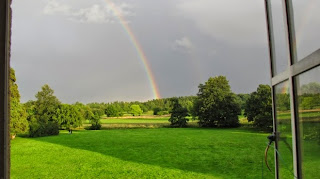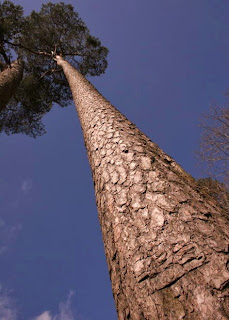Severe Thunderstorm Warning Conditions
If a certain bad weather condition has been observed by the scientists (on their monitors) especially those with potential threat of causing significant damages, a "Severe Thunderstorm Warning" will be issued to the affected residential areas. Those scientists are more specifically known as the "Storm Spotters". They are actually professionals where they can detect the early stage of development of a severe thunderstorm.
What storm spotters use in detecting a thunderstorm is a sophisticated technology known as the "Doppler Weather Radar". This advance equipment has the capability to analyze and determine any possible formation of a thunderstorm with impressive accuracy. But the most remarkable capability of this technology is that, it can also predict if the storm has the potential to produce dangerous large forms of hails, tornadoes and strong winds.
The organization that issues Severe Thunderstorm Warnings in the US are the NWS or "National Weather Service". In Canada, it's the "Environment Canada's Meteorological Service of Canada". And at the UK (United Kingdom), they have the "Skywarn".
Not all thunderstorm are destructive. In fact, severe thunderstorm rarely occurs. Anyway, here are the following conditions of a thunderstorm before it can be considered as Severe:
Based on the United State's NWS
1. The thunderstorm must have large hails composing of at least 1 inch in sizes.
2. The speed of the surface winds must be at least 58 miles per hour or higher.
3. A combination of the two criteria above.
Based on Environment Canada's Meteorological Service of Canada
1. Wind gusts should be greater than 90 kilometers per hour.
2. Diameter of the hail must be greater than 20 mm.
3. In an hour of continuous rainfall, the size of the rainfall drops must be at least 50 mm. A size of 75 mm is observed after 3 hours (provided that the rainfall didn't stopped).
Based on UK's Skywarn
1. The minimum speed of the wind goes 55 miles per hour (89 km/h).
2. The minim hail size must be at least 20 mm (0.79 in).
Take note: Lightning and floods caused by heavy rainfall is not considered by the United States, Canada and UK as a potential criteria of a severe thunderstorm.
One of the most terrifying aspect of a thunderstorm is it can produce a tornado without warning. Tornadoes had already shown in the history its very destructive force. It causes terrible calamities where countless number of residential homes were completely destroyed. But, did you know that there is even far and much worse force of nature than the tornado that a severe thunderstorm can produce?
It's the "Straight Line Wind Damage". This force of nature is actually far more devastating than the tornado because the damages that it can incur cover wider areas.
Storm spotters don't usually go out in the field and chase tornadoes around just to perform their analysis. It's because through their Doppler Weather Radar system, they can now monitor the formation of the thunderstorm via Satellite View. In most cases, if they notice some kind of large circling rotation of the clouds on their equipment's monitor, they will immediately issue a tornado warning.
The Doppler Weather Radar technology actually detects the formation of a thunderstorm which is the main basis of its analysis. A thunderstorm that is producing weak rotation means that it will yield a hazardous weather condition. On this case, the affected residences are warned about the storm and advised to keep a close observation as it might surprisingly become stronger resulting into a threat.
In the Great Plains or Southeastern Regions of the U.S., Doppler Weather Radar often fails to detect the occurrences of severe thunderstorms that can produce tornadoes. It's because tornadoes can be produced by the terrible storm without warning. Worst, storms in the Great Plains can also produce massive hailstones with sizes of about 2. 75 inches or larger. Just to let you know, there were already several victims of hailstones in which most of them resulted into a condition known as "blunt trauma".

Moreover, storms spotters can be mistaken. At some instances, they even issue the Severe Thunderstorm Warning quite late. Thus, the best method is to make your own observation. Through constant practice and experience, you can easily predict the outcome of the thunderstorm on your own.
What storm spotters use in detecting a thunderstorm is a sophisticated technology known as the "Doppler Weather Radar". This advance equipment has the capability to analyze and determine any possible formation of a thunderstorm with impressive accuracy. But the most remarkable capability of this technology is that, it can also predict if the storm has the potential to produce dangerous large forms of hails, tornadoes and strong winds.
The organization that issues Severe Thunderstorm Warnings in the US are the NWS or "National Weather Service". In Canada, it's the "Environment Canada's Meteorological Service of Canada". And at the UK (United Kingdom), they have the "Skywarn".
Criteria of a Severe Thunderstorm
Not all thunderstorm are destructive. In fact, severe thunderstorm rarely occurs. Anyway, here are the following conditions of a thunderstorm before it can be considered as Severe:
Based on the United State's NWS
1. The thunderstorm must have large hails composing of at least 1 inch in sizes.
2. The speed of the surface winds must be at least 58 miles per hour or higher.
3. A combination of the two criteria above.
Based on Environment Canada's Meteorological Service of Canada
1. Wind gusts should be greater than 90 kilometers per hour.
2. Diameter of the hail must be greater than 20 mm.
3. In an hour of continuous rainfall, the size of the rainfall drops must be at least 50 mm. A size of 75 mm is observed after 3 hours (provided that the rainfall didn't stopped).
Based on UK's Skywarn
1. The minimum speed of the wind goes 55 miles per hour (89 km/h).
2. The minim hail size must be at least 20 mm (0.79 in).
Take note: Lightning and floods caused by heavy rainfall is not considered by the United States, Canada and UK as a potential criteria of a severe thunderstorm.
Destructive Tornado of a Thunderstorm
One of the most terrifying aspect of a thunderstorm is it can produce a tornado without warning. Tornadoes had already shown in the history its very destructive force. It causes terrible calamities where countless number of residential homes were completely destroyed. But, did you know that there is even far and much worse force of nature than the tornado that a severe thunderstorm can produce?
It's the "Straight Line Wind Damage". This force of nature is actually far more devastating than the tornado because the damages that it can incur cover wider areas.
Doppler Weather Radar System
Storm spotters don't usually go out in the field and chase tornadoes around just to perform their analysis. It's because through their Doppler Weather Radar system, they can now monitor the formation of the thunderstorm via Satellite View. In most cases, if they notice some kind of large circling rotation of the clouds on their equipment's monitor, they will immediately issue a tornado warning.
The Doppler Weather Radar technology actually detects the formation of a thunderstorm which is the main basis of its analysis. A thunderstorm that is producing weak rotation means that it will yield a hazardous weather condition. On this case, the affected residences are warned about the storm and advised to keep a close observation as it might surprisingly become stronger resulting into a threat.
In the Great Plains or Southeastern Regions of the U.S., Doppler Weather Radar often fails to detect the occurrences of severe thunderstorms that can produce tornadoes. It's because tornadoes can be produced by the terrible storm without warning. Worst, storms in the Great Plains can also produce massive hailstones with sizes of about 2. 75 inches or larger. Just to let you know, there were already several victims of hailstones in which most of them resulted into a condition known as "blunt trauma".

Moreover, storms spotters can be mistaken. At some instances, they even issue the Severe Thunderstorm Warning quite late. Thus, the best method is to make your own observation. Through constant practice and experience, you can easily predict the outcome of the thunderstorm on your own.






